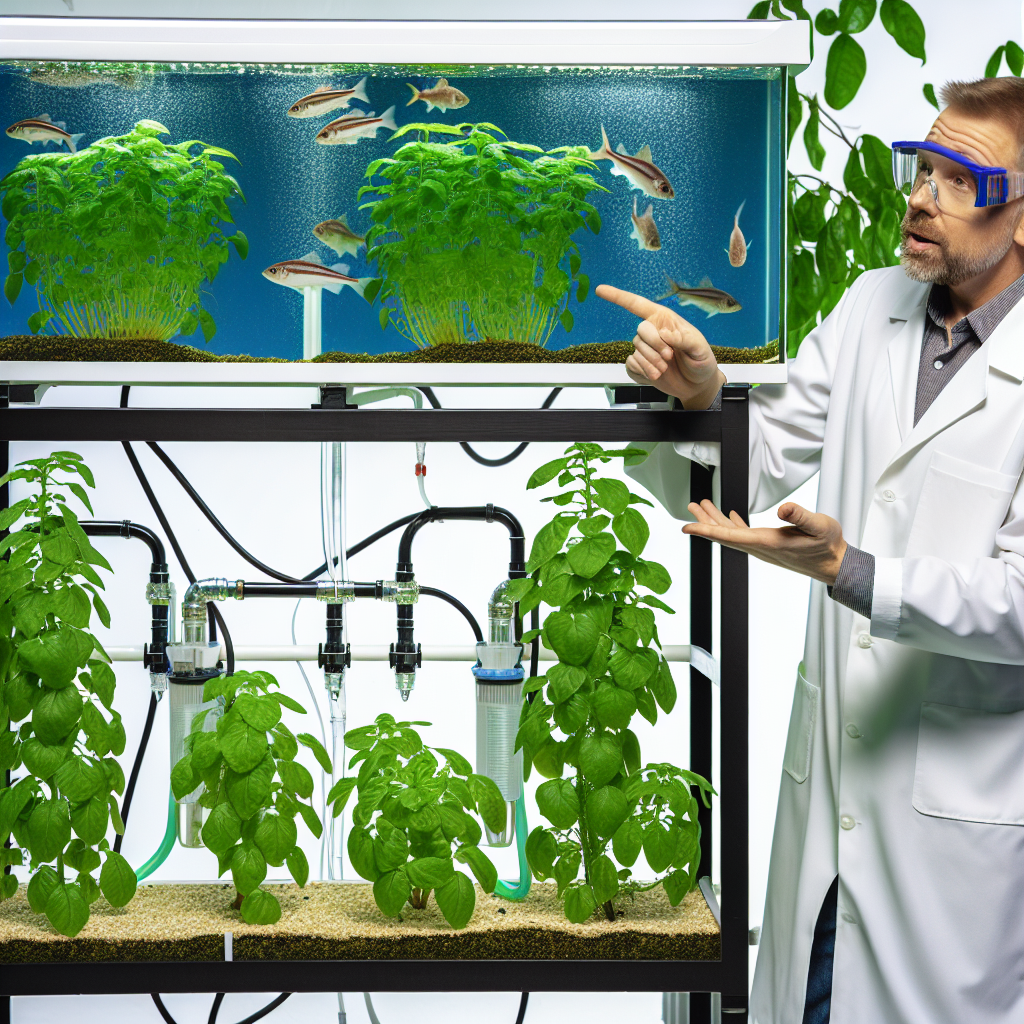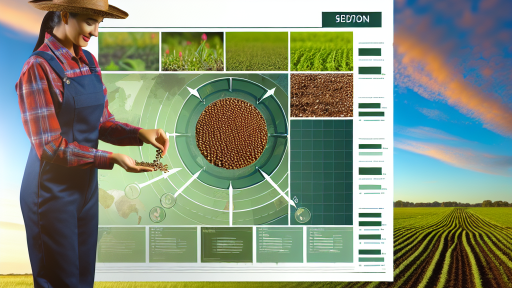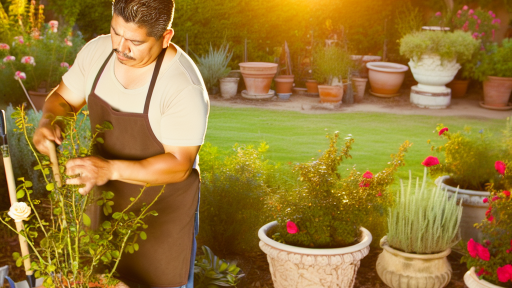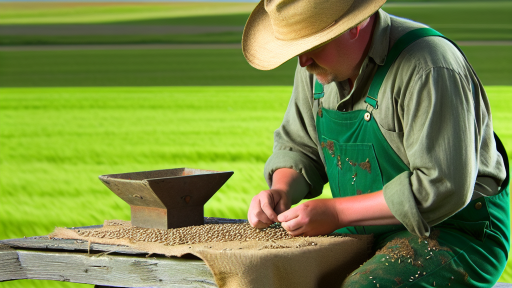Understanding the Basics of Aquaponics
What is Aquaponics?
Aquaponics combines aquaculture and hydroponics in a sustainable system.
Fish waste provides essential nutrients for plants.
Meanwhile, plants purify the water for the fish.
This creates a closed-loop ecosystem that thrives on efficiency.
The Components of an Aquaponics System
An aquaponics setup consists of three main components.
- Fish tank for cultivating aquatic animals.
- Grow beds for planting vegetables and herbs.
- A filtration system to maintain water quality.
These elements work together to ensure the health of both plants and fish.
The Benefits of Aquaponics
Aquaponics offers several advantages for home gardeners and commercial operations.
- It conserves water more effectively than traditional agriculture.
- The system minimizes the need for chemical fertilizers.
- It allows for year-round food production.
Overall, aquaponics promotes sustainable food production practices.
Key Concepts in Aquaponics
Understanding key concepts enhances success in aquaponics.
First, know the nitrogen cycle, crucial for nutrient conversion.
Second, recognize the importance of monitoring pH levels.
Lastly, familiarize yourself with companion planting techniques.
Each of these concepts contributes to a thriving aquaponic system.
Choosing the Right Space for Your Aquaponics System
Evaluating Space Requirements
Begin by considering the available space for your aquaponics setup.
Ensure it can accommodate both plants and fish comfortably.
Transform Your Agribusiness
Unlock your farm's potential with expert advice tailored to your needs. Get actionable steps that drive real results.
Get StartedNext, evaluate the dimensions and total area needed.
This evaluation helps prevent overcrowding in your system.
Indoor vs. Outdoor Setup
Decide whether to set up indoors or outdoors.
Each option offers distinct benefits and challenges.
Indoor setups allow year-round growth regardless of weather.
However, outdoor systems utilize natural sunlight effectively.
Consider your local climate when making this choice.
Accessibility and Convenience
Choose a space that provides easy access to your aquaponics system.
This accessibility ensures regular maintenance and care.
Look for a location near water sources and electricity.
Proximity to your home can also save time and effort.
Light Availability
Assess the amount of natural light the space receives.
Sunlight is crucial for plant growth in aquaponics.
Choose a location that avoids excessive shading from nearby structures.
Consider supplemental lighting for indoor setups if necessary.
Temperature Control
Temperature plays a significant role in aquaponics systems.
Choose a space that can be easily heated or cooled.
Stable temperatures support the health of both fish and plants.
Evaluate insulation and ventilation options as needed.
Future Expansion
Think about potential future growth when selecting a space.
Plan for extra room to expand your system later.
This foresight allows you to increase production without relocating.
Consider modular designs for easy scalability.
Essential Components of an Affordable Aquaponics Setup
Understanding Aquaponics Basics
Aquaponics combines aquaculture and hydroponics in one system.
Showcase Your Farming Business
Publish your professional farming services profile on our blog for a one-time fee of $200 and reach a dedicated audience of farmers and agribusiness owners.
Publish Your ProfileThis innovative method allows you to grow fish and plants together.
The fish waste fertilizes the plants while the plants clean the water.
Both components play a crucial role in system sustainability.
Choosing the Right Fish
Selecting the right fish is vital for your aquaponics system.
Tilapia is a popular choice due to its hardiness and rapid growth.
Catfish is another option, known for its ability to thrive in various conditions.
Consider local regulations and climate when choosing your fish.
Building Your Grow Bed
Your grow bed should be sturdy and water-resistant.
Many people use food-grade plastic containers for this purpose.
Make sure it allows for proper drainage to prevent root rot.
Add a media that supports plant growth, such as expanded clay pellets.
Installing a Reliable Water Pump
A good water pump is essential for circulating water through the system.
Choose a pump that suits the size of your aquaponics setup.
Look for energy-efficient models to save on electricity costs.
Regular maintenance ensures optimal performance and longevity.
Aeration for Healthy Fish
Aeration techniques provide essential oxygen for fish survival.
Use air stones or diffusers connected to an air pump for effective aeration.
Regularly check the water for oxygen levels to keep your fish healthy.
Higher oxygen levels contribute to faster fish growth rates.
Utilizing Natural Fertilizers
Reduce costs by using natural fertilizers whenever possible.
Compost and worm castings can enhance your nutrient supply.
Organic materials enrich the ecosystem and promote soil health.
Always monitor nutrient levels to ensure balanced growth.
Efficient Lighting Solutions
Providing adequate light is crucial, especially for indoor setups.
LED grow lights are energy-efficient and long-lasting options.
Ensure your plants receive the right spectrum for their growth stage.
Adjusting light duration can stimulate healthier plant growth.
Implementing a Simple Monitoring System
Monitoring pH levels is essential for successful aquaponics.
Use simple test kits to ensure conditions remain optimal.
Regularly check ammonia and nitrate levels to support fish well-being.
Keeping detailed records helps identify trends and necessary adjustments.
Learn More: Edible Landscaping for Soil Health
Cost-Saving Strategies for Sourcing Materials and Supplies
Explore Local Sources
Start your aquaponics setup by exploring local suppliers.
Visit gardening centers for affordable equipment.
Check community forums for recommendations on local vendors.
Local farms often sell surplus materials at lower prices.
Utilize Recycled Materials
Consider using recycled components whenever possible.
Old containers can serve as fish tanks or planters.
Pallets can be repurposed for building garden beds.
Look for free resources on websites like Freecycle.
Showcase Your Farming Business
Publish your professional farming services profile on our blog for a one-time fee of $200 and reach a dedicated audience of farmers and agribusiness owners.
Publish Your ProfileBuy in Bulk
Take advantage of bulk purchasing for common supplies.
Partner with friends or local farmers to buy together.
This strategy can significantly reduce your costs.
Always compare prices from multiple suppliers.
DIY Solutions
Embrace do-it-yourself projects to save money.
Build your own aquaponics system instead of buying pre-made.
Online tutorials provide detailed instructions.
Engage in local workshops to enhance your skills.
Join Online Communities
Participate in online aquaponics groups or forums.
Members often share tips on sourcing affordable materials.
Connect with experienced hobbyists for advice.
Look for discount codes or group purchasing options.
Plan Your Setup Carefully
A well-planned setup minimizes unnecessary expenses.
Sketch your design to visualize material needs.
Factor in storage space for supplies and equipment.
Adjust your design if it helps reduce costs.
Discover More: Pest Control Strategies For Urban Gardens
DIY vs. Commercial Systems: Analyzing Cost-Effectiveness
Understanding DIY Aquaponics Systems
DIY aquaponics systems offer flexibility in design and scale.
These systems allow you to customize components based on your budget.
Also, they often use recycled materials to minimize costs.
Building your own system can be a rewarding experience.
However, it requires time and effort to research and construct.
Evaluating Commercial Systems
Commercial aquaponics systems provide convenience and expertise.
These systems usually come pre-assembled and user-friendly.
Additionally, they often include guidance and support from manufacturers.
However, the initial investment tends to be higher than DIY options.
Furthermore, ongoing maintenance costs may also add up.
Cost Comparison of DIY and Commercial Systems
To compare costs effectively, consider both upfront and ongoing expenses.
DIY systems might have low initial costs but can entail hidden expenses.
For instance, purchasing materials and equipment can add to the budget.
On the other hand, commercial systems have clear pricing structures.
These include warranties and customer support, which may justify higher costs.
Long-Term Sustainability and Efficiency
Efficiency is a critical factor in cost-effectiveness over time.
DIY systems may require more frequent repairs and upgrades.
This can lead to unexpected costs that offset initial savings.
Conversely, commercial systems tend to use optimized designs for efficiency.
They can reduce operational costs significantly in the long run.
Evaluating Your Options
Your choice hinges on budget, skills, and long-term goals.
If you have DIY skills and time, consider a homemade system.
Otherwise, a commercial system might save you time and hassle.
Showcase Your Farming Business
Publish your professional farming services profile on our blog for a one-time fee of $200 and reach a dedicated audience of farmers and agribusiness owners.
Publish Your ProfileUltimately, weigh the pros and cons based on your unique situation.
Explore Further: Marketing Heirloom Produce: Tips for Farmers

Tips for Selecting Fish and Plants for Your Aquaponics System
Choosing the Right Fish
Selecting suitable fish is crucial for a thriving aquaponics system.
Start by considering the local climate where your system operates.
Warmwater fish, like tilapia, thrive in higher temperatures.
Cooler environments are better suited for species like trout.
Research the fish species to determine their growth rates and requirements.
Some fish are more resilient and easier to manage, such as goldfish.
Consider the availability of fish feed, as it impacts overall costs.
Check local regulations regarding the types of fish you can raise.
Finally, avoid overstocking the fish tank to maintain water quality.
Selecting Complementary Plants
Choosing the right plants is equally important for a balanced aquaponics system.
Focus on plants that thrive in similar conditions to your fish.
Lettuce, herbs, and leafy greens generally do well in aquaponics.
Consider incorporating fruiting plants, such as tomatoes, for variety.
Check the growth cycles of plants to plan for continuous harvests.
Some plants grow faster than others, so choose wisely.
Ensure that selected plants can tolerate the nutrient levels from fish waste.
Experiment with different plant varieties to discover what works best.
Balancing Fish and Plant Needs
An effective aquaponics system relies on balancing fish and plant needs.
Monitor the pH levels to ensure they are suitable for both fish and plants.
Adjust the nutrient levels based on the growth stage of your plants.
Regularly test water quality parameters for optimal health.
Consider the light requirements of plants alongside fish activity levels.
Learn to adapt your setup based on seasonal changes and growth patterns.
Keeping a close eye on both fish and plants fosters a sustainable ecosystem.
Engage with local aquaponics communities to share knowledge and experiences.
Learn More: Troubleshooting Common Hydroponic Issues
Maintenance and Monitoring: Keeping Costs Down Over Time
Regular Maintenance Tasks
Consistent maintenance is crucial for a thriving aquaponics system.
Check water quality regularly to ensure optimal conditions.
Test pH, ammonia, nitrite, and nitrate levels weekly.
Additionally, inspect fish and plants for signs of stress or disease.
Keep your equipment clean and functional to avoid costly repairs.
Utilizing Cost-Effective Tools
Invest in affordable monitoring tools to simplify your maintenance tasks.
Use test kits that provide results for multiple parameters.
Consider smart sensors that automate monitoring tasks.
These tools can help spot issues before they escalate.
Creating a Maintenance Schedule
A maintenance schedule promotes efficiency and organization.
Plan daily, weekly, and monthly tasks to maintain consistency.
Daily tasks may include feeding fish and checking water levels.
Showcase Your Farming Business
Publish your professional farming services profile on our blog for a one-time fee of $200 and reach a dedicated audience of farmers and agribusiness owners.
Publish Your ProfileWeekly tasks might involve testing water quality and cleaning tanks.
Monthly tasks can include checking equipment functionality and replacing filters.
Monitoring Fish and Plant Health
Monitoring the health of fish and plants is essential.
Observe behavioral changes in fish for signs of distress.
Look for discoloration or wilting in plants as indicators of issues.
Address problems quickly to avoid larger expenditures later.
Documenting Your Findings
Documentation aids in understanding trends over time.
Maintain a log of water quality parameters and plant growth patterns.
This record allows you to adjust practices for optimal results.
Furthermore, it can reveal patterns that inform future decisions.
Learning from Others
Engage with the aquaponics community for shared knowledge.
Online forums and local meetups provide valuable insights.
Identify successful techniques and cost-saving strategies used by others.
Consider collaborating with local aquaponics enthusiasts.
Resources for Learning More
Books on Aquaponics
Books provide in-depth knowledge about aquaponics systems.
One recommended title is ‘Aquaponic Gardening’ by Sylvia Bernstein.
This book covers the basics and advanced techniques.
Another great option is ‘The Aquaponic Farmer’ by Murray Hallam.
This guide focuses on commercial aquaponics setups.
Online Resources
The internet offers numerous resources about aquaponics.
Websites like Aquaponics.com provide valuable insights.
Additionally, YouTube has many instructional videos.
Look for channels that feature aquaponic projects.
Online forums are another great place to learn.
Platforms like Reddit have active aquaponics communities.
Community Support
Connecting with others can enhance your aquaponics journey.
Local gardening clubs often support aquaponics initiatives.
Your local extension office might also have resources.
Look for aquaponics workshops in your area.
Social media groups can also provide support and ideas.
Consider attending aquaponics conferences and expos.
Additional Resources
Small-scale hydroponics | UMN Extension
Small-scale aquaponic food production – Integrated fish and plant …




